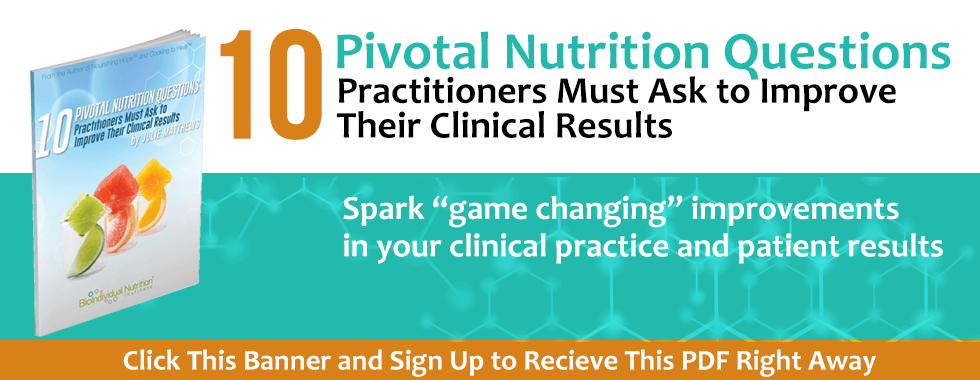 Individualized Nutrition – The Functional Approach
Individualized Nutrition – The Functional Approach
For decades, conventional nutrition recommendations have followed a one-size-fits-all model. The problem with this approach is that every person is different from the other. We are all unique individuals, and no one diet that will be healthy for everyone. A diet or nutrition plan that benefits one person may harm another. This is why individualized nutrition is important.
As unique individuals, we have different dietary needs and nutritional requirements. Many factors should be considered in determining the right diet for an individual, including genetics, microbiome, lifestyle, dietary habits, physical activity, lab testing (hidden causes), symptoms, and other factors.

The Standard American Diet
Individualized nutrition addresses food, nutrition, and supplements based on the individual needs of each person. It also recognizes that dietary needs will change over time and with healing.
Almost half of all Americans have a chronic disease. The Westernized or Standard American Diet is a huge factor in this epidemic. This diet is high in sugar, refined carbohydrates, conventionally-raised meat and dairy, farmed fish, toxic fats, and processed foods. Removing these foods can benefit all people.
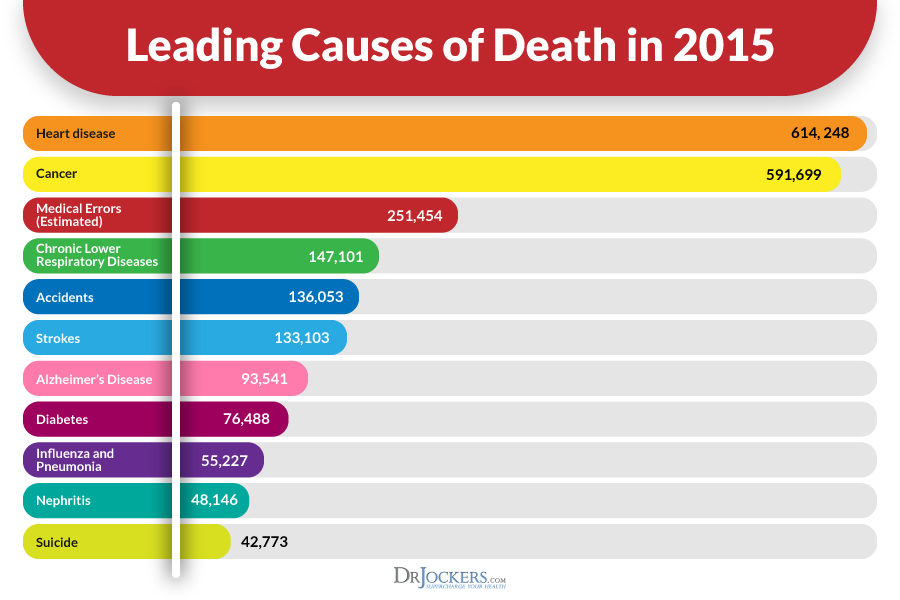
BioIndividual Nutrition Program
In addition to removing inflammatory, disease-promoting foods, there are specialized nutrition plans to address different health conditions and individual goals. These diets can include a low salicylate diet, low histamine diet, low oxalate diet, ketogenic diet, low FODMAPS diet, and SCD/GAPS diet.
The BioIndividual Nutrition Training Course is an advanced practitioner training course. The course guides practitioners in developing individualized nutrition plans for their clients. The course also helps practitioners understand the science and thought process behind choosing which diet, customizing the diet, and avoiding pitfalls. This course can be very beneficial to any practitioner who recommends nutrition or dietary plans to their patients or clients.
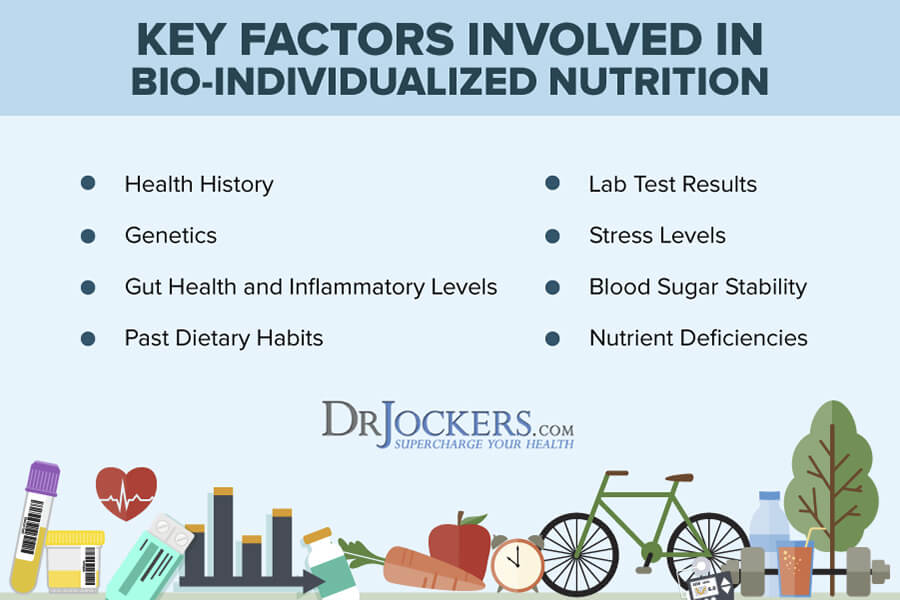
What is Individualized Nutrition?
The goal of individualized nutrition is to maintain or improve a person’s health using relevant information to recommend a specific dietary and nutrition plan. It is important to individualize nutrition recommendations because a diet that benefits one person may not be best or be harmful to another.
There are several considerations in determining the best diet for a person. These considerations include the person’s gut health, genetics, microbiome, lifestyle, dietary habits, physical activity, lab testing, nutrient deficiencies, symptoms the person is experiencing, and more.
Studies have shown that personalizing dietary advice is more effective in changing a person’s diet than a conventional one-size-fits-all approach (1). These plans can be helpful when managing diseases and for supporting people with special nutritional needs, such as in pregnancy or advanced age.
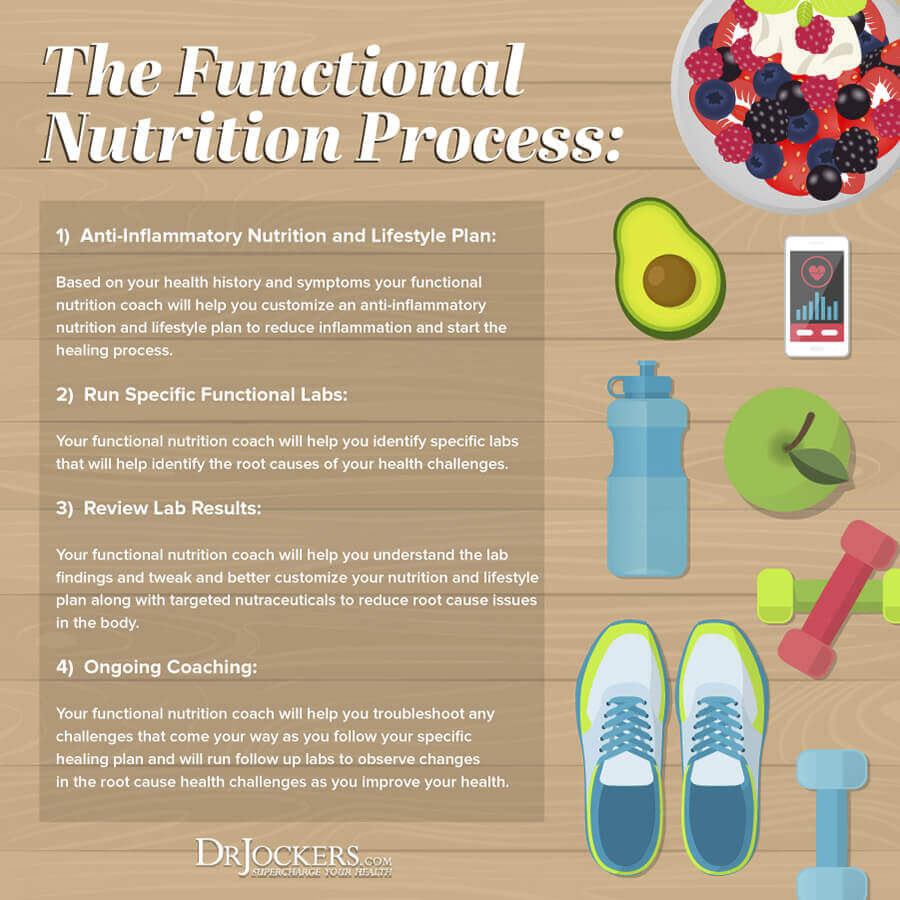
Common Dietary Factors that Lead to Chronic Disease
While individualized nutrition is important, there are several foods that everyone should reduce or eliminate. Included in this list are sugars, refined carbohydrates, toxic fats, farmed fish, conventionally-raised meat and dairy, and processed foods. These foods are highly inflammatory and contribute to chronic disease.
There is a known link between dietary patterns and chronic disease (1). A chronic disease “is a physical or mental health condition that lasts more than one year and causes functional restrictions or requires ongoing monitoring or treatment” (2). These include cancer, diabetes, heart disease, hypertension, stroke, respiratory diseases, and obesity.

Diet and Chronic Disease Continued
Unfortunately, the rates of chronic disease are rising. In America, nearly half (43%), or 133 million people, have at least one chronic disease. 25% of U.S. adults have two or more chronic conditions. Children are also suffering from chronic diseases at record numbers.
This rise in chronic disease is largely related to obesity which is usually a product of an unhealthy lifestyle and poor diet (3). A major contributor is the Westernized modern diet or Standard American Diet (SAD). It is estimated that 45.4% of deaths from heart disease, stroke, and diabetes are associated with an unhealthy diet.
One of the main culprits is carbohydrates. The typical American diet is comprised of around 55% carbohydrates, ranging from 200-350 grams a day. A greater intake of refined carbohydrates is associated with a 44% increased prevalence of metabolic syndrome and obesity and a 20% increased risk of developing diabetes.
It is critical for your health to avoid refined carbohydrates, as well as sugars, toxic fats, processed foods, farmed fish, and conventional meat and dairy. This is nutrition advice that everyone should follow.

Foods Often Eliminated or Restricted in Nutrition Programs
There are many different diet and nutrition theories and programs. Each of these diets has foods that are allowed and others that may be limited or removed from the diet. The foods restricted are typically those that may burden or inflame a person’s system either because of a sensitivity/intolerance or a compromised digestive system.
When recommending an individualized nutrition plan, it is important to identify any symptoms a person is experiencing, as well as their reactions to different foods. Removing or reducing the foods that cause or contribute to underlying health issues is important for reducing inflammation, improving gut health, and maximizing nutrient absorption.
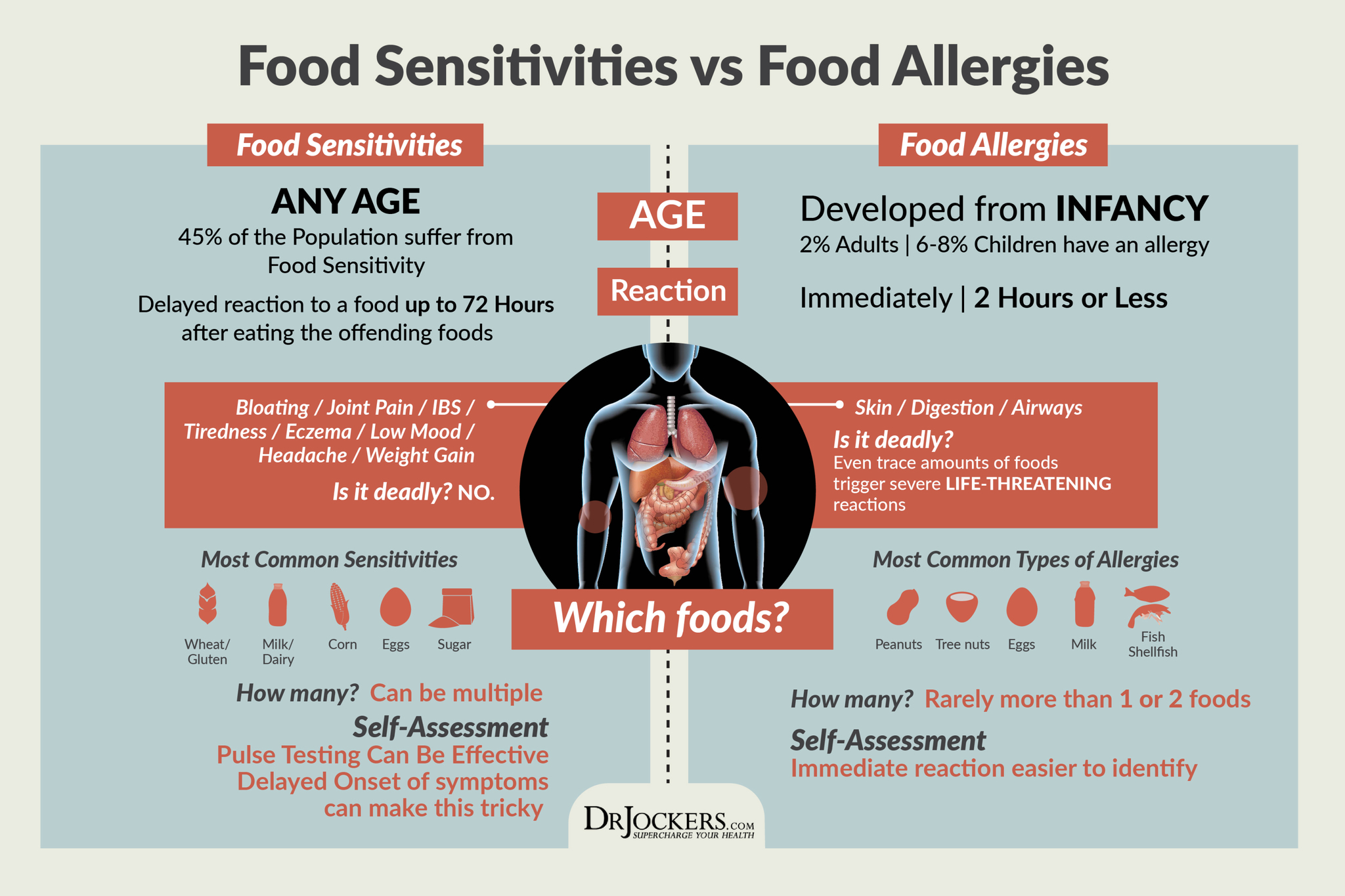
Food Elimination Continued
Once the person has removed offending foods, they can begin to heal and restore their system by adding foods, nutrients, and targeted supplements. The goal is to increase nutrient levels, improve biochemistry and cellular function, heal the gut, and restore the microbiome.
The next step is to slowly reintroduce foods that were eliminated. While reintroducing foods, the person should record all foods they are eating with any positive or negative symptoms. The diet is modified based on the results of reintroduction and expanded to include foods with as much variety and nutrient density as tolerated.
Most diets restrict some, or all, of the common food allergens/sensitivities. These include:
- Gluten: wheat, barley, rye, spelt, kamut, triticale, commercial oats
- Casein: cow’s milk, cheese, yogurt, and other dairy products
- Soy
- Corn
- Fish and shellfish
- Eggs
- Peanuts and tree nuts
Food allergies can be life-threatening and symptoms are immediate. On the other hand, food sensitivities can be to any food, especially those you eat the most. Food sensitivities can be difficult to identify because symptoms are usually delayed. You can learn more about food sensitivities and ways to test in this article.
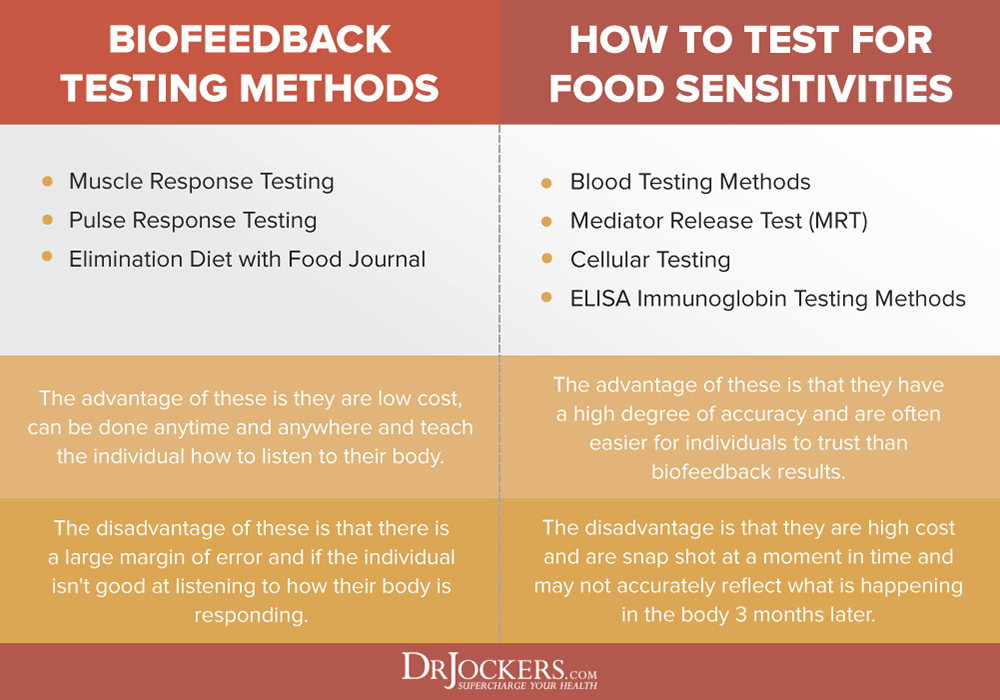 Special Diets
Special Diets
There are many special diets and nutrition plans that have been developed to address various health conditions and individual health goals. These include the low salicylate diet, low histamine diet, low oxalate diet, ketogenic diet, low FODMAPS diet, low glutamate diet, GFCF diet, paleo diet, and SCD/GAPS diet to name a few.
Let’s look more closely at some of these diets and how they can be beneficial. Depending on your unique health challenges, one of these approaches will likely be a part of your individualized nutrition plan.
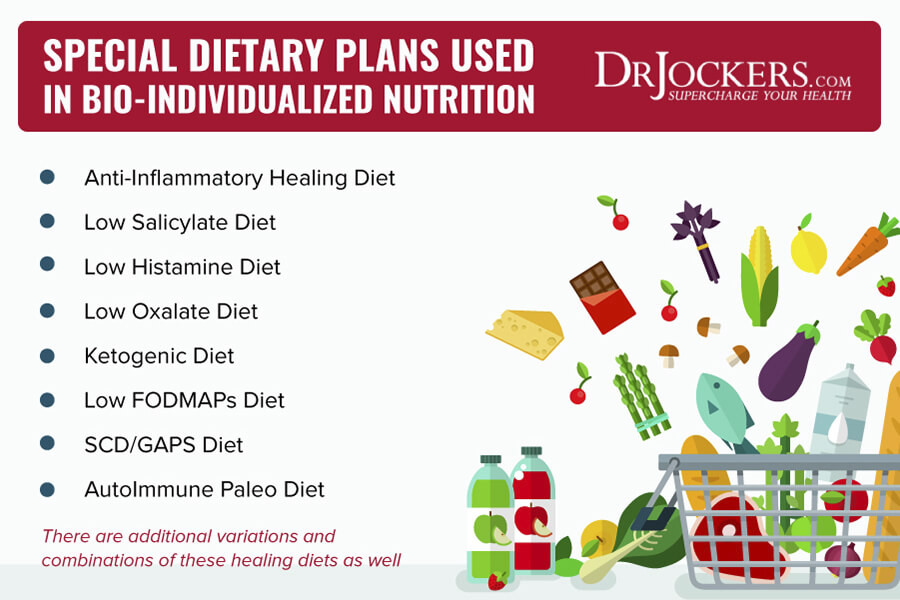
Low Salicylate Diet
Salicylates are a group of chemicals derived from salicylic acid. These compounds are found naturally in certain foods and synthetically in other substances. Salicylates can cause adverse reactions in intolerant people.
Symptoms of salicylate intolerance or sensitivity include stuffy nose, sinus infection and inflammation, nasal and sinus polyps, asthma, diarrhea, gas, abdominal pain, gut inflammation, hives, and tissue swelling. A low salicylate diet is critical for people suffering from salicylate intolerance or sensitivity.
Many foods contain salicylates. Foods highest in salicylates include:
- Fruits: raisins, prunes, apricots, blackberries, blueberries, cherries, cranberries, grapes, pineapples, plums, oranges, tangerines, strawberries, and guava. Dried fruits contain higher amounts than raw.
- Vegetables: broccoli, cucumbers, okra, chicory, endive, radish, zucchini, watercress, alfalfa sprouts, eggplant, squash, sweet potato, spinach, artichokes, and broad beans.
- Spices: curry, aniseed, cayenne, dill, ginger, allspice, cinnamon, clove, mustard, cumin, oregano, pimiento, tarragon, turmeric, paprika, thyme, and rosemary.
- Other sources: tea, rum, wine, cordials, vinegar, gravies, mints, almonds, water chestnuts, honey, licorice, jam, chewing gum, pickles, olives, food colorings, aloe vera, savory-flavored chips and crackers, and fruit flavorings.
Salicylates can also be found in non-food products such as mint-flavored toothpaste, shampoos and conditioners, perfumes, mouthwash, lotions, and medications. The most potent source is aspirin and other non-steroidal anti-inflammatory drugs (NSAIDs), including ibuprofen. If you respond unfavorably to any of the foods or products mentioned above, a low-salicylate nutrition plan may be critical for your individualized nutrition plan.
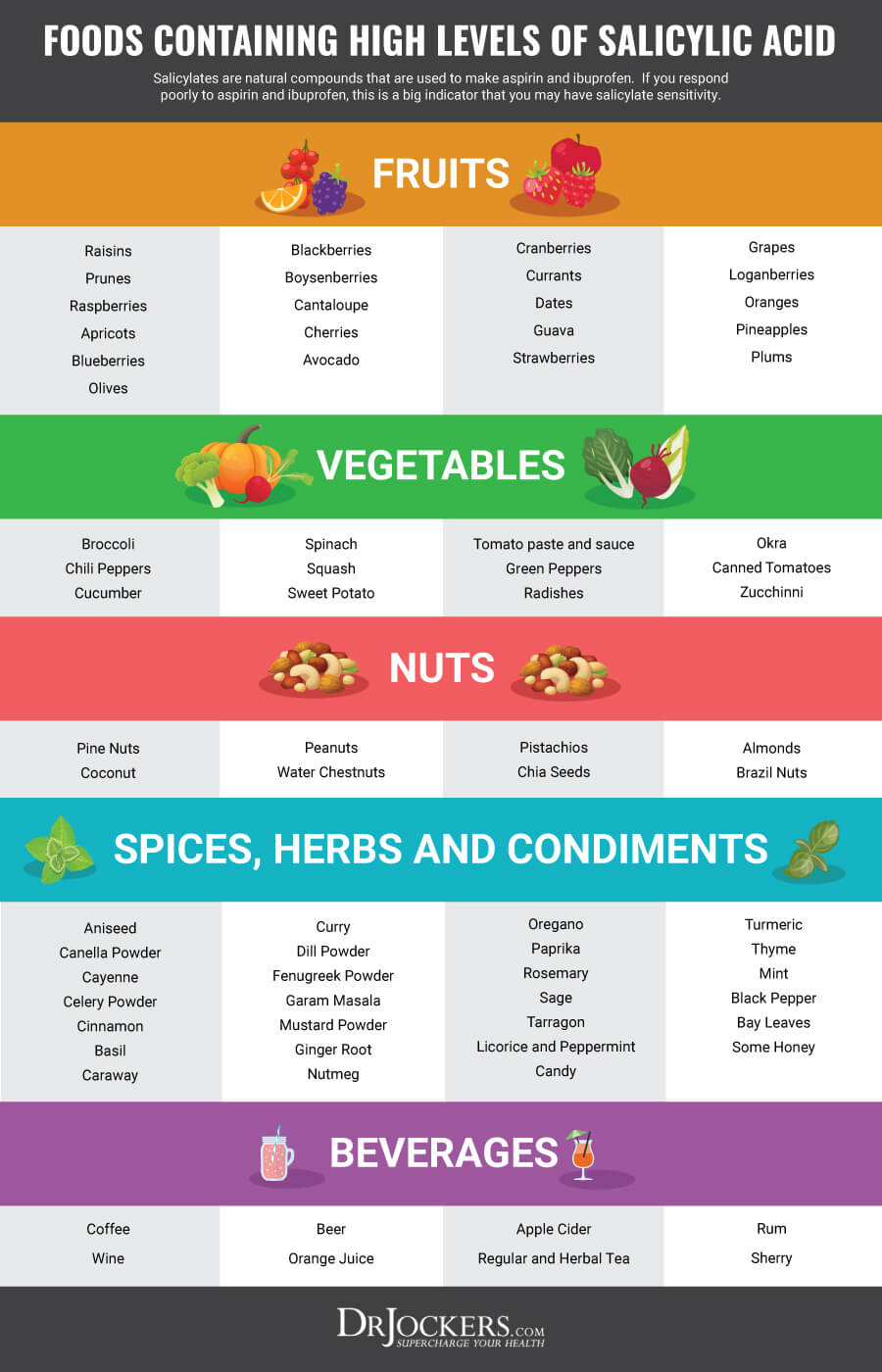
Low Histamine Diet
Histamine is an amine that is produced by your cells and found in foods. Histamine is an inflammatory molecule that helps regulate immunity. As part of the immune response, histamine is produced by basophils and by mast cells found in connective tissue.
Histamine intolerance is a type of food intolerance. Like salicylates, it is a good example of how biochemically a food may be a superfood for one person and toxic to another. It is also another example of why individualized nutrition is becoming so important.
An individual with histamine intolerance has an exaggerated reaction to high histamine foods (such as fermented foods and beverages, vinegar, cured meats, soured foods, citrus fruits, dried fruits, aged cheeses, nuts, and processed foods) or foods that produce histamine (such as alcohol, cow’s milk, avocados, nuts, and bananas). Consuming these foods can lead to chronic health issues such as allergies, asthma, sinus problems, eczema, and more.
The causes of the exaggerated reaction to high histamine foods could be insufficient DAO enzyme production (needed for proper histamine metabolism) or elevated histamine levels. A low histamine diet can be extremely beneficial for people with a histamine intolerance. For more information about histamine intolerance and how to know if you could be suffering, read this article.
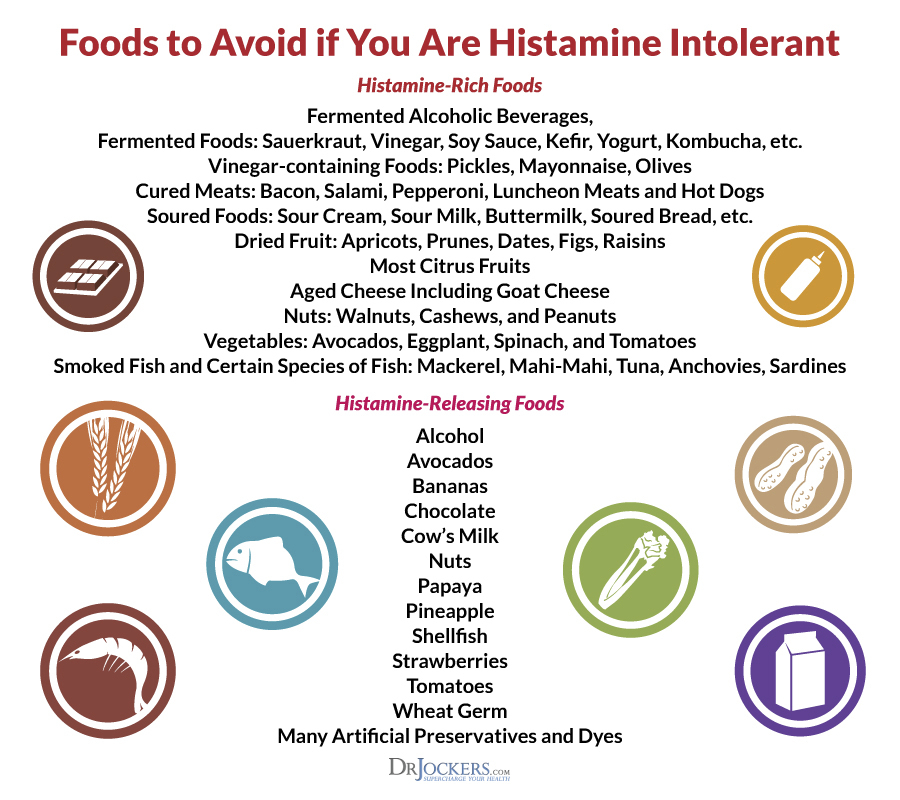 Low Oxalate Diet
Low Oxalate Diet
A low oxalate (oxalic acid) diet restricts foods that are high in oxalates. Oxalic acid is an organic compound found in many plants, so many high-oxalate foods are otherwise healthy foods.
High-oxalate foods include spinach, beets, chocolate, peanuts, wheat bran, tea, berries, and nuts (cashews, pecans, and almonds). Excessive consumption of these high-oxalate foods can cause high levels of oxalic acid in the body.
In addition to obtaining oxalates from food, your body can produce oxalic acid. It is the most acidic organic acid in our bodies, derived primarily from fungi (Aspergillus and Penicillium), Candida, or your metabolism. Deficiencies in vitamin B6 can contribute to elevations in oxalic acid.
High oxalates can be very dangerous. Oxalate crystals have a sharp physical structure that can cause oxidative damage, increase inflammation, cause pain, and damage tissues. Oxalate crystals may form in joints, blood vessels, muscles, kidneys, lungs, heart, thyroid, eyes, and even the brain. High oxalic acid can hinder the proper function of vital bodily functions, poison the mitochondria, and contribute to kidney stones.
High oxalates in the gastrointestinal tract may significantly reduce the absorption of essential minerals such as calcium, magnesium, zinc, and more. Oxalates may form in the bones, crowding out bone marrow cells. This can lead to anemia and immunosuppression. Identifying elevated oxalate metabolites is significant for people with chronic pain, joint issues, kidney stones, and other health issues.
A low oxalate diet can be helpful for painful conditions such as fibromyalgia. Reducing these inflammatory oxalates helps to heal the gut and reduce yeast and dysbiosis. For more information on a low oxalate diet, read this article.
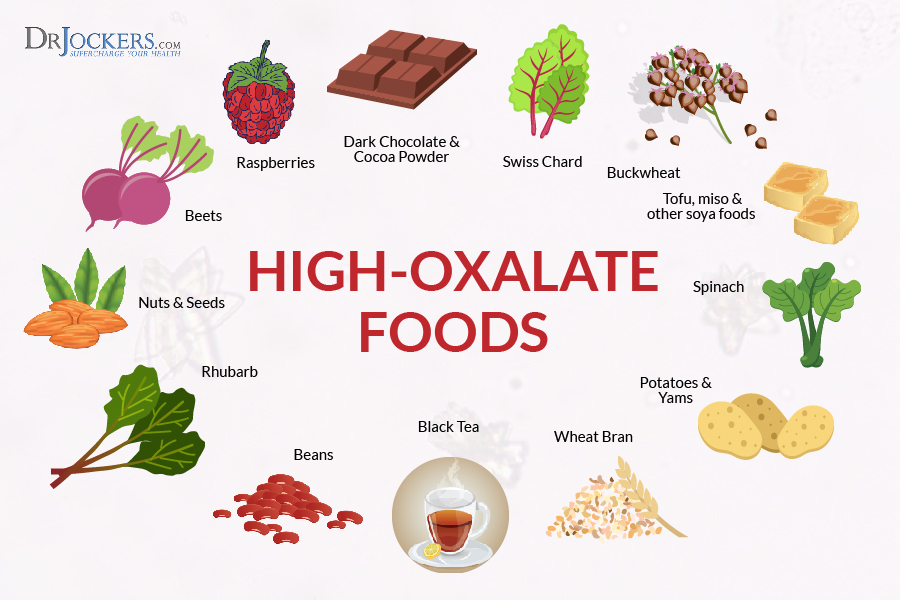
Ketogenic Diet
The ketogenic diet is a nutrition and lifestyle plan that helps your body use fat (stored fat and dietary fat) rather than sugar for fuel. This plan helps the body produce ketones from fat. Ketones are byproducts of the body breaking down fat for energy.
When the body is in ketosis, it utilizes ketones as an energy source instead of sugar. Burning fat for energy is much more efficient and produces less inflammation than burning sugar.
The ketogenic diet is a high-fat, low-carbohydrate, moderate-protein nutrition plan. 60-80% of calories are from healthy fats, 20-30% are from protein sources, and 5-10% are from net carbs (total carbs minus fiber). This style of eating encourages a healthy metabolism and enables your body to function at a more efficient level.
A low-carb, high-fat ketogenic diet is associated with many health benefits. The ketogenic diet lowers inflammation, balances blood sugar levels and your mood, improves mental performance, gives you energy, ends cravings, helps with fat loss, slows down again, and reduces your risk of chronic disease.
For information on the nine proven benefits of the ketogenic diet, check out this article. If your health challenges are based largely on blood sugar issues, neurological inflammation, or metabolic dysfunction, then a ketogenic diet may be a part of your individualized nutrition plan.
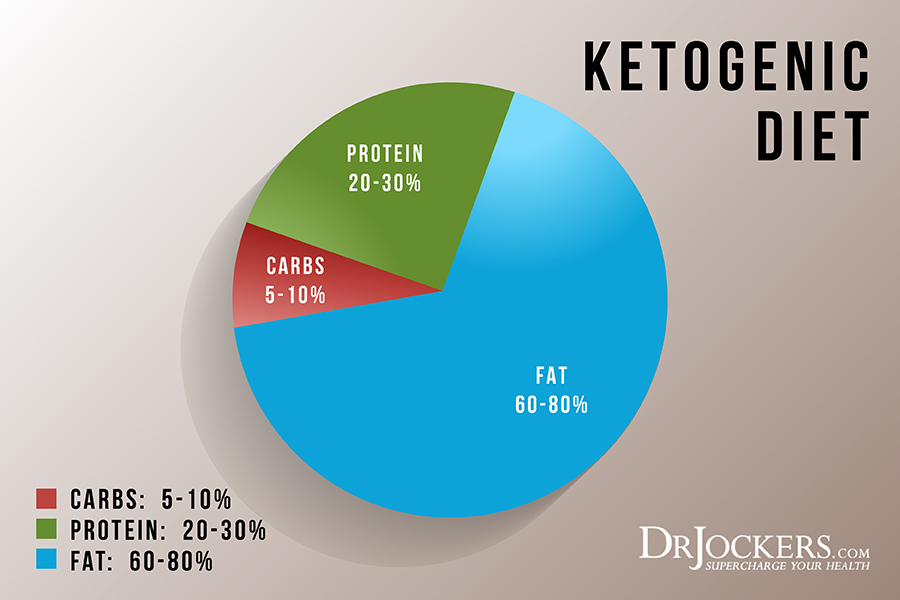
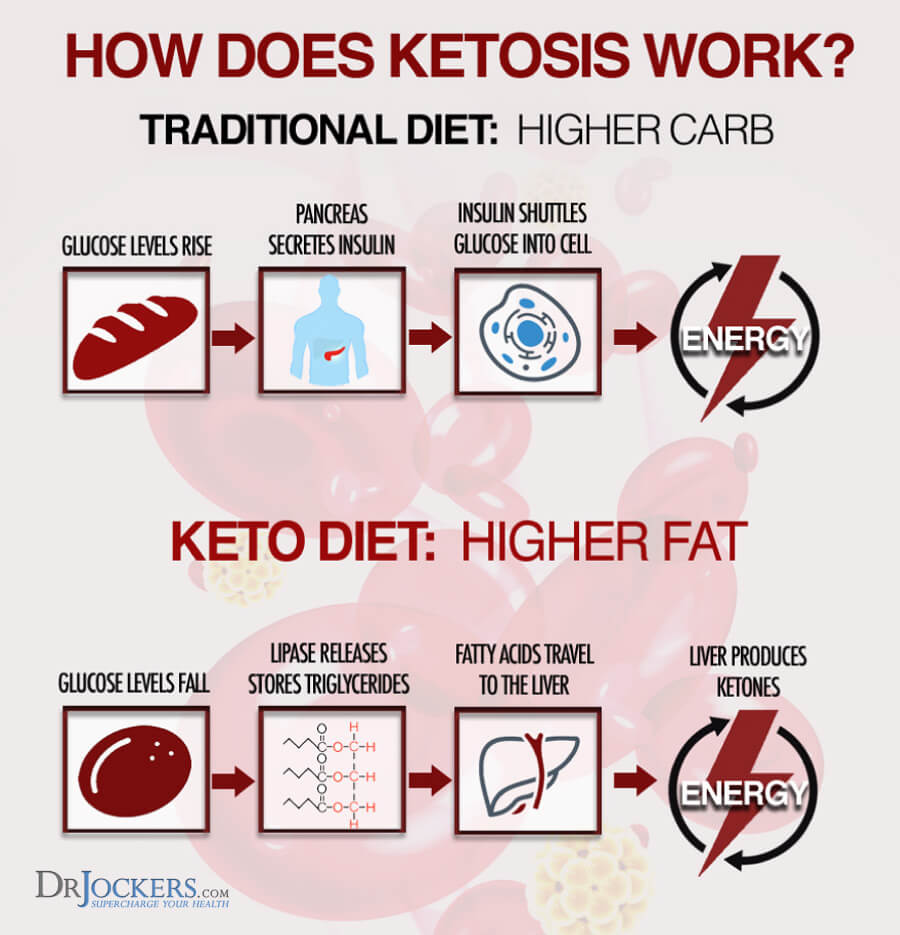
Low FODMAPS
A low FODMAP diet removes sugar-based carbohydrates that are found in certain foods. FODMAP is an acronym for Fermentable Oligo, Di- and Monosaccharides and Polyols. These sugars include fructose, glucose, galactans, polyols, and lactose. They can be difficult for some people to digest and can lead to gastrointestinal issues.
Examples of FODMAP foods to avoid on this diet are:
- Excess fructose: fruits (apples, mangos, watermelon) sweeteners, and honey
- Lactose: milk and cheese
- Fructans: vegetables (asparagus, broccoli, onion, eggplant), cereals, fruit, misc.
- Galactans: legumes (chickpeas, kidney beans, lentils)
- Polyols: fruit (apricots, avocados, blackberries, peaches), vegetables (cauliflower, mushrooms), sweeteners (sorbitol, xylitol)
Read this article for more information on how to beat digestive problems with a low FODMAP diet. This style of eating is often a part of individualized nutrition plans for those dealing with chronic microbial imbalances like SIBO or candida.

SCD/GAPS
The Specific Carbohydrate Diet (SCD) and Gut and Psychology Syndrome (GAPS) diet are designed to improve digestive and overall health. These diets eliminate complex carbohydrates, lactose, sucrose, and processed foods from the diet. Foods included are easy to digest, natural foods.
SCD is an individualized nutrition consideration to naturally treat chronic inflammatory conditions in the digestive tract. The GAPS diet was derived from the SCD but adjusted to address the needs of people suffering from intestinal and neurological conditions resulting from a compromised microbiome.
The GAPS diet removes foods that are difficult to digest and damaging to gut flora and replaces them with nutrient-dense foods. For more information about the GAPS diet and using this diet to improve digestion, check out this article.
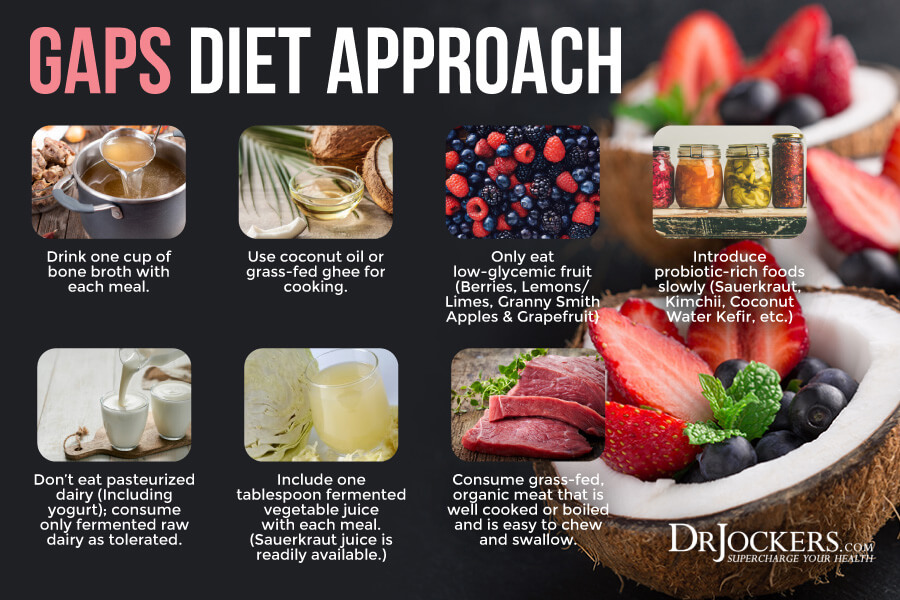
The BioIndividual Nutrition Training Course for Practitioners
The BioIndividual Nutrition Training Program was created by Julie Matthews, a Certified Nutrition Consultant, author, and published scientific researcher. She has 16 years of clinical experience in the areas of autism, ADHD, children’s health, and pregnancy nutrition. She is passionate about getting kids off to a good start in life and helping children with complex biomedical challenges through strategic diet and nutritional intervention. Julie wrote the award-winning book Nourishing Hope for Autism, and its companion cookbook titled Cooking to Heal.
BioIndividual Nutrition is the science and clinical application of diet and nutrition intervention customized to the unique needs of an individual (4). In her BioIndividual Nutrition training program, Julie teaches the science and clinical thought process behind over a dozen effective therapeutic diets. She explains how certain food chemicals and compounds can interfere with biochemistry and impede healing and then provides a proven methodology to adapt diets for individual food allergies and sensitivities.
This knowledge is crucial for practitioners who make nutritional and dietary recommendations to their clients or patients. With so many diets being touted, it is important to have the tools and knowledge necessary to determine and hone the most effective approach for each personalized nutrition plan. Our patients are more apt to remain compliant with our dietary recommendations when they are specific to their individual needs.
 Who Can Benefit from the BioIndividual Nutrition Training Course?
Who Can Benefit from the BioIndividual Nutrition Training Course?
Any practitioner who uses diet and nutrition in their practice can benefit from this training program. This course empowers practitioners to improve their clinical effectiveness and results while avoiding time-consuming errors.
The approach you learn in this training is beneficial for a variety of health conditions including IBS, fatigue, anxiety, autism, ADHD, eczema, allergies, digestive disorders, autoimmune disorders, neurological conditions, methylation issues, mitochondrial dysfunction, nutrient deficiencies, food sensitivities, thyroid issues, diabetes, aging, pain, addiction, pregnancy and depression. Check out the free guide 10 Pivotal Questions Every Practitioner Must Ask to Improve Their Clinical Results.
Graduates of the program become certified in BioIndividual Nutrition and support clients with a range of chronic health conditions and concerns. Practitioners who focus on pediatrics, including autism and related complex neurological conditions, can complete a second intensive training with Julie for even further specialized career expertise.
Any practitioners who use diet and nutrition in their practice can benefit from this training course. This course gives practitioners the tools they need to prevent common mistakes that other practitioners make. Check out the free guide 10 Pivotal Questions Every Practitioner Must Ask to Improve Their Clinical Results for more info.

Finding a Health Coach Trained in BioIndividual Nutrition
If you’re looking for a leading edge practitioner trained in bioindividual nutrition, then check the practitioner directory where you can find nutritionists, health coaches, doctors, and naturopaths who have completed this comprehensive training. These professionals know how to individualize their approach to your needs and avoid distracting diet dogma.
My team of health coaches at DrJockers.com is going through this advanced training right now as we aim to bring the highest quality functional health coaching to our clients and bring the best health information to all of our followers.
Conclusion
One-size-fits-all diet approaches do not work. As unique individuals, a diet or nutrition plan that benefits one person may harm another. A person’s dietary needs will also change over time and with healing.
Many factors should be considered in personalizing diet and nutrition recommendations. These factors include gut health, symptoms, physical activity, lab testing, and other factors
Chronic disease is an epidemic in America. This is in large part because of the unhealthy Standard American Diet. Sugar, refined carbohydrates, conventionally-raised meat and dairy, farmed fish, toxic fats, and processed foods contribute to chronic disease.
In addition to removing the disease-promoting foods, there are individual nutrition plans to address specific health conditions. These diets can include a low salicylate diet, low histamine diet, low oxalate diet, ketogenic diet, low FODMAPS diet, and SCD/GAPS diet.
For any practitioner who uses diet and nutrition in their practice, the BioIndividual Nutrition Training Course can be very beneficial. It is an advanced practitioner training course that guides practitioners in how to develop individualized nutrition plans for their clients. The course helps practitioners understand the science and thought process behind choosing which diet, customizing the diet, and avoiding pitfalls.
If you want to work with a functional health coach, I recommend this article with tips on how to find a great coach. On our website, we offer long-distance functional health coaching programs. For further support with your health goals, just reach out—our fantastic coaches are here to support your journey.

